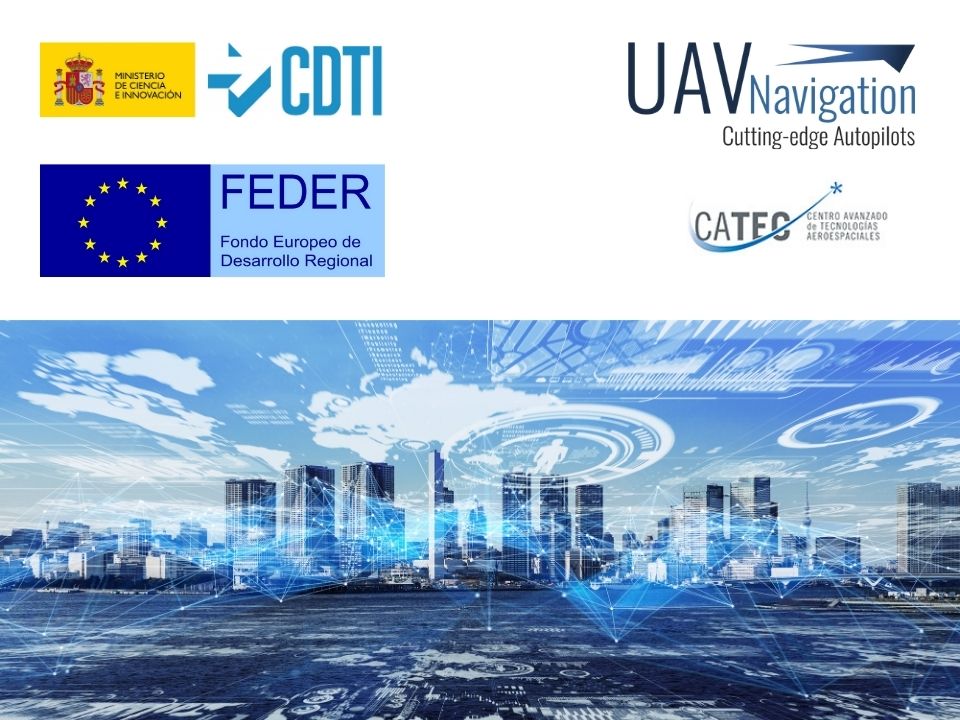
UAV Navigation and CATEC have presented an urban air mobility project within the CERVERA call, funded by the Center for Technological and Industrial Development (CDTI) and the Spanish Ministry of Science and Innovation, which consists of an operating platform based on the capability of aircraft operating in a uniform and highly safe manner in confined spaces.
According to UAV Navigation: “Without an efficient and comprehensive solution, the use of unmanned aircraft cannot be widely adopted in the intelligent transport or distribution of materials and goods. Therefore, it is important to have a holistic vision, to try to offer a global solution of maximum security to the problem of the “delivery of the last mile”. It must add value to the current supply chain, reduce both costs and delivery times, and also be a sustainable and scalable solution. Providing a solution that takes into account all technological, operational, and security aspects to respond to market needs is the main challenge of this project.
“Due to the fact that the legislative framework is still in the process of being defined, it will be assumed that UAVs that want to operate in a shared space must adapt to the most demanding operational safety standards, requiring the development of technologies for onboard and ground systems as much as possible, while being as reliable and efficient as possible.
“From a commercial point of view, the development of instrumentation and safety infrastructures is taken into account through intelligent actuation and anti-collision systems that allow operating in the airspace with a level of safety equivalent to a manned aircraft, and their adoption is supposed to be an economic attraction for the company. Finally, another goal in this project is to ensure the implementation of the solution, while reducing the environmental impact of freight transport, seeking to provide a response that allows meeting the increasing demand, though, at the same time, without depending on the systems of traditional, less efficient, and more polluting transport.”
UAV Navigation reports it has already developed control systems which could be a starting point for the development of this project. “Autopilots today have control and navigation algorithms together with estimation logic, making the flight of fixed-wing and rotary-wing aircraft possible and, above all, safe. Based on these factors, it will be necessary to develop a flight control logic fully for VTOL-type platforms, which, thanks to their ability to combine the advantages of the two previously mentioned platforms, make them the ideal platforms for the transport of goods in urban and rural environments,” says the company. “Finally, it is necessary to develop a whole logic that allows fast and efficient management of several unmanned aircraft in coordinated flight in densely occupied airspaces (Multi-UAV) to allow the simultaneous distribution of packages, thus, increase the efficiency of the service of transport. Anti-collision technologies, visual navigation, protection against jamming attacks, or the possibility of operating without a GNSS signal are essential requirements to a safe navigation framework, in which UAV Navigation continues to research and improve its flight control solutions.”
The project has also been co-financed by the European Regional Development Fund (FEDER), which prioritizes the promotions of market-oriented scientific-technical research in technological areas.

